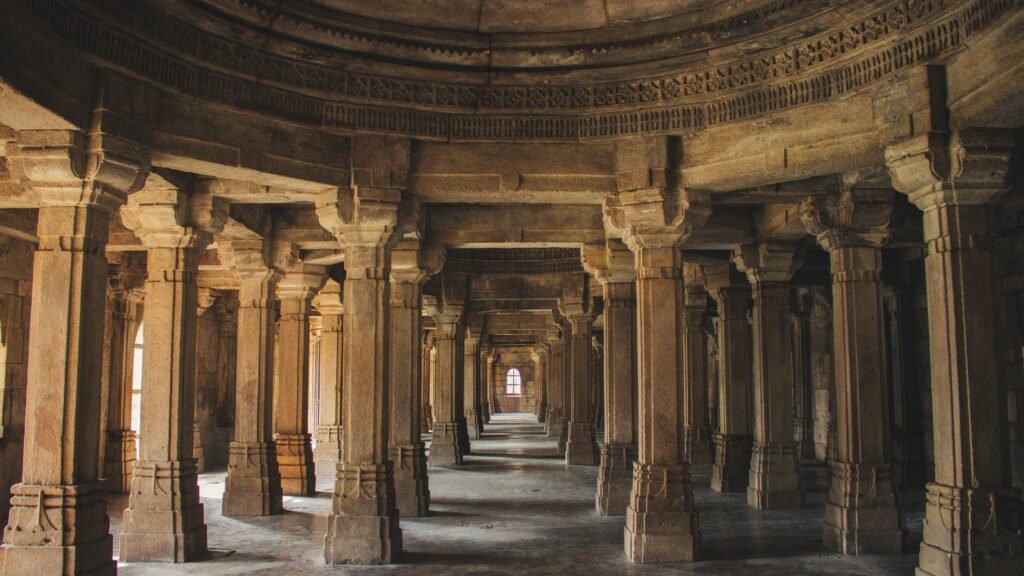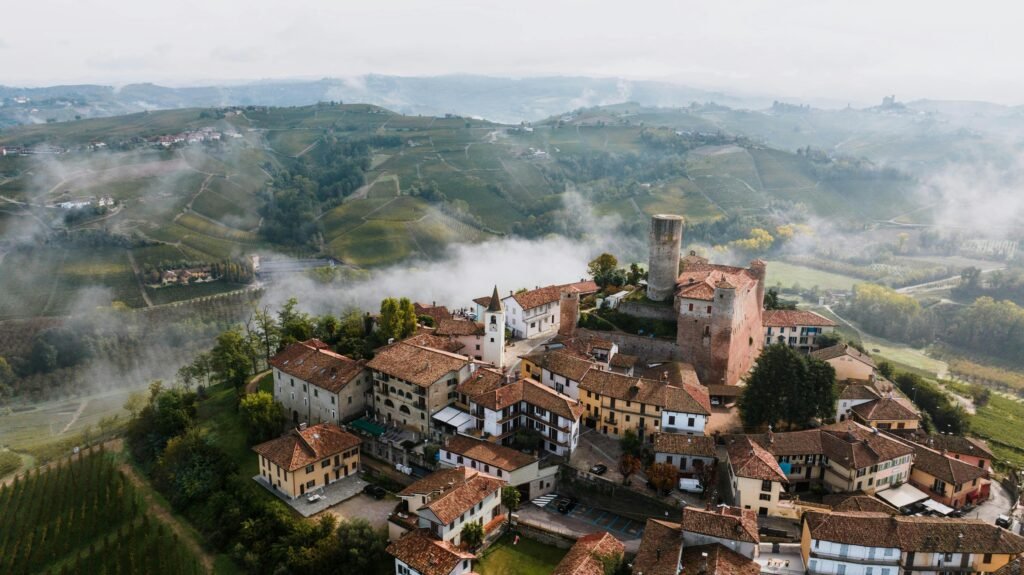Italy is home to over 30 Hindu temples serving a growing community of more than 150,000 Hindus.
In this guide I will tell you about 10 best hindu temples in italy.
I will tell you insightful details about each temple, including its significance, unique features, and practical visitor tips.
Let’s explore the most significant Hindu temples you shouldn’t miss on your Italian journey!
BAPS Shri Swaminarayan Mandir (Rome)
This temple located in the eastern part of the city, this impressive structure literally took my breath away!
The temple, inaugurated in 2017, stands as Italy’s largest Hindu temple. The craftsmanship is incredible—hand-carved marble elements were created in India and assembled in Rome by skilled artisans. Can you imagine the dedication that takes?
The main prayer hall features intricate marble carvings depicting scenes from Hindu scriptures, while the central shrine houses beautifully adorned murtis (sacred images) of Bhagwan Swaminarayan and other deities.
The temple is open daily from 9 AM to 7 PM, but I’d recommend checking their website before your visit as hours can change during special festivals.
Dress code is something you definitely need to consider—modest clothing that covers shoulders and knees is mandatory, and you’ll need to remove your shoes before entering the main shrine.
This temple regularly hosts educational programs about Hinduism and Indian culture. They even offer guided tours in English and Italian if you call ahead!
If you’re in the area, make sure to combine your visit with the nearby Parco degli Acquedotti for maximize your travel experience.
Sri Kamadchi Ampal Temple (Turin)
The Sri Kamadchi Ampal Temple in Turin holds a special place in my heart—it was where I first witnessed a traditional Tamil Hindu ceremony in Italy! This South Indian style temple is dedicated to Goddess Kamadchi.
What makes this temple truly unique is its authentic Dravidian architectural style, which stands in stark contrast to Turin’s predominantly Baroque and neoclassical buildings.
I made the rookie mistake of visiting on a regular Tuesday, only to find minimal activity. Learn from my experience! The best time to visit is definitely during the annual Chariot Festival (usually held in July), when thousands of devotees gather to pull a magnificent temple chariot through the streets of Turin.
When it comes to visitor etiquette, this temple is fairly traditional. Women should wear dresses or pants that cover the legs, and men should avoid shorts. Photography is generally permitted in the outer areas, but always ask before taking photos of ceremonies or the main shrine.
Getting there is pretty straightforward—the temple is accessible via Turin’s public transportation system, with several bus routes stopping nearby.
What surprised me most was the temple’s community kitchen that serves delicious South Indian vegetarian food after the main puja (worship service) on Sundays. The volunteers prepare authentic dishes like idli, dosa, and sambar—a perfect way to complete your cultural experience!
The temple also maintains a small library of books on Hinduism and Tamil culture, which visitors are welcome to browse.
Shri Hindu Temple (Milan)
I still remember stumbling upon the Shri Hindu Temple during a business trip to Milan—it was such an unexpected discovery in Italy’s fashion capital!
Established in the 1990s, this temple holds significant historical importance as one of Milan’s first established Hindu places of worship.
Located in a repurposed building in the eastern part of the city, the temple’s exterior might not immediately catch your eye (I actually walked past it twice before finding it!). But don’t let that fool you—step inside and you’re transported to a vibrant spiritual space that serves as the heart of Milan’s diverse Hindu community.
The main prayer hall houses shrines dedicated to several deities, with Lord Ganesha, Lord Shiva, and Goddess Durga being particularly prominent.
What makes this temple interesting is how it’s adapted to its Italian setting—you’ll notice some Italian architectural elements blended with traditional Hindu symbolism throughout the interior.
The temple holds regular aartis (ritual of light) every evening around 7 PM, which is a perfect time for visitors to observe ceremonies. Sunday mornings are also busy with community gatherings and religious activities.
The temple offers some really useful visitor services, including multilingual volunteers who can explain the significance of various deities and rituals.
During my visit, a group of Italian schoolchildren was there on a field trip, learning about Hindu traditions as part of their religious studies curriculum.
The temple has a modest gift shop where you can purchase religious items, books, and traditional Indian handicrafts—perfect for meaningful souvenirs that actually support the temple’s maintenance.
If you’re visiting Milan between September and October, try to time your visit during Navratri celebrations when the temple comes alive with colorful decorations and vibrant dance performances.
Krishna Balaram Mandir (Florence)
This ISKCON (International Society for Krishna Consciousness) temple provides a fascinating spiritual counterpoint to the Renaissance art and architecture that Florence is famous for.
The temple was established in the early 2000s and has since become a spiritual hub for devotees of Lord Krishna in central Italy.
The main altar features beautiful deities of Krishna and Balaram, adorned with fresh flowers and elegant outfits that change daily.
The priests perform traditional arati ceremonies several times each day, with the evening arati around 7 PM being particularly beautiful.
One of the highlights of my visit was definitely participating in a kirtan (devotional chanting) session.
Even though I didn’t know the words, the rhythm and devotion were infectious!
The temple hosts regular bhajans and kirtans that visitors are welcome to join, regardless of their background or religious affiliation.
What surprised me most was their amazing vegetarian restaurant attached to the temple. They serve prasadam (sanctified food) as part of their community service, and let me tell you—the sabji (vegetable curry) and rice I had there was some of the best Indian food I’ve tasted in Italy! The restaurant operates on a donation basis, making it accessible to everyone.
The temple offers weekly classes on Bhagavad Gita philosophy in both Italian and English, which attract an interesting mix of devotees and curious visitors.
Photography is generally permitted in the main hall but not during ceremonie.
Sanatan Mandir (Reggio Emilia)
Visiting the Sanatan Mandir in Reggio Emilia gave me a whole new experience!
This temple, located in the Emilia-Romagna region, serves a surprisingly large Hindu population of primarily North Indian origin.
The main worship hall features a long altar with multiple deities representing various aspects of Hindu tradition.
Lord Rama, Sita, Lakshman and Hanuman occupy a central position, along with Radha-Krishna, Shiva, and Durga.
During my visit, volunteers were creating an elaborate rangoli for an upcoming festival—the precision and artistry were mesmerizing!
They regularly host visits from local Catholic schools and participate in city-wide multicultural events. The temple president proudly told me about their annual open house, where they invite locals to learn about Hindu traditions and enjoy Indian food and cultural performances.
The temple offers guided tours for visitors, but it’s best to schedule these in advance by contacting them through their Facebook page.
Keep in mind that most of the information is in Hindi or Italian, with limited English resources—having a guide definitely enhances the experience.
For visitors interested in understanding the everyday practice of Hinduism in Italy, this temple provides authentic insights into how traditions adapt and thrive in new cultural contexts.
Sri Guru Singh Sabha Gurdwara (Novellara)
I know what you’re thinking—a Gurdwara isn’t technically a Hindu temple! But trust me, including the Sri Guru Singh Sabha Gurdwara in Novellara on this list makes perfect sense when understanding the broader South Asian religious landscape in Italy.
This impressive structure, with its distinctive domes and flagpole flying the Nishan Sahib (Sikh flag), stands as the largest Gurdwara in Italy.
Located in the small town of Novellara near Reggio Emilia, it serves the region’s significant Sikh community, primarily immigrants from Punjab who work in the agricultural sector.
When I visited I was on a complete whim during a road trip through the region. I’d heard about the place but wasn’t prepared for its scale and beauty.
Many Hindu visitors come to the Gurdwara, particularly those from northern India, reflecting the overlapping cultural heritage shared by different religious communities from the subcontinent.
The langar (community kitchen) experience was the absolute highlight of my visit. I was invited to join the free communal meal.
What fascinated me was learning about how the Gurdwara serves as a cultural hub for the broader Indian community.
The annual Baisakhi parade through Novellara’s streets is a colorful spectacle that attracts visitors from across northern Italy.
For those interested in understanding the full spectrum of Indian spiritual traditions in Italy, the Gurdwara provides important context. Many Hindu families I spoke with mentioned attending events here alongside their visits to Hindu temples, reflecting the practical interfaith relationships that develop in diaspora communities.
Final Thought
Italy’s Hindu temples offer a fascinating glimpse into the cultural diversity and religious plurality of modern Italy.
Whether you’re a spiritual seeker, cultural explorer, or simply curious about different religious practices, these ten temples provide rich experiences that will enhance your understanding of contemporary Italy.
From the architectural splendor of Rome’s BAPS Shri Swaminarayan Mandir to the vibrant community life at Bologna’s Sri Ganesha Temple, each offers unique insights into how Hindu traditions have found new expression in an Italian context.
As Italy continues to evolve as a multicultural society, these temples stand as important landmarks in the country’s changing religious landscape.



